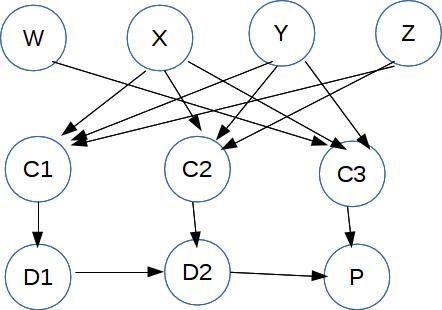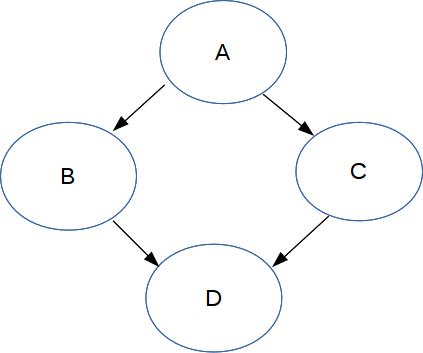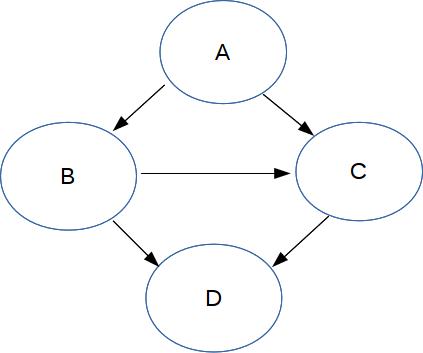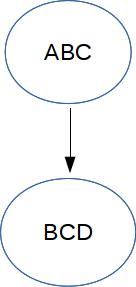When the output diagrams are reasonably simple,
they can then be used to generate solutions for
the original diagram. (Long story, beyond the scope of this class.)
However, this isn't guaranteed to work: the output graphs
can be as complex as the original Bayes net.
For example, notice that the new composite variable ABC has 8 possible values,
because it's standing in for three boolean variables.
Quick review: NP complete
A decision problem is in NP (non-deterministic polynomial time) if
you can provide a succinct (polynomial time verifiable) justification
that a "yes" answer is correct. An example is whether a graph can
be colored with k colors: just show us the coloring.
Problems in NP are widely believed to require exponential time.
However, it is an open question whether there might be a better
algorithm using only polynomial time.
A problem X is NP complete if a polynomial time algorithm for X
would allow us to solve all problems in NP in polynomial time.
A very standard NP complete problem is 3SAT. The input 3SAT is
a logical expression like this:
\(P = (X \text{ or } Y \text{ or } Z)
\ \text{ and }\ (X \text{ or } \neg Y \text{ or } \neg Z)
\ \text{ and }\ (X \text{ or } W \text{ or } Y) \)
Our algorithm must determine whether there is a set of input true/false
values (for W, X, Y, Z) that will make the whole expression true.
The input expression (P) must have the following form
- It's the AND of a series of terms.
- Each term is the OR of up to 3 variables (plain or negated).
Bayes net inference is NP complete
We can prove that Bayes net inference is NP complete, by showing
how to use Bayes Net inference to construct an algorithm for 3SAT.
Suppose we have a 3SAT logical expression:
\(P = (X \text{ or } Y \text{ or } Z)
\ \text{ and }\ (X \text{ or } \neg Y \text{ or } \neg Z)
\ \text{ and }\ (X \text{ or } W \text{ or } Y) \)
We convert it to a Bayes net that looks like this

The top row of nodes are the input variables. The
nodes C1, C2, C3 represent the terms. E.g.
C1 represents \((X \text{ or } Y \text{ or } Z)\).
Their associated
probability tables simulate an OR of their inputs.
The nodes D1, D2, and P assemble the full logical
expression, using probability tables that simulate the
AND of their inputs. So D2 represents
\((X \text{ or } Y \text{ or } Z)
\ \text{ and }\ (X \text{ or } \neg Y \text{ or } \neg Z) \)
Our inference problem is whether we can find values
for the input variables W,X,Y,Z that will give us
a non-zero output probability value for P.
Bottom line
So, we have good and bad news about Bayes net inference:
- A useful range of examples can be solved efficiently.
These include hidden Markov models
(HMM's) which we'll see next week.
- Other examples probably require exponential time.
Their values can be approximated using sampling methods
beyond the scope of this course.
Further reading
A Brief Introduction to Graphical Models and Bayesian Networks
by Kevin Murphy (1998)



